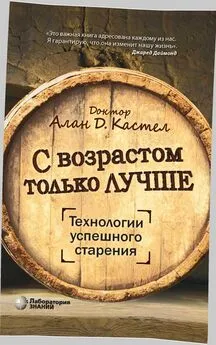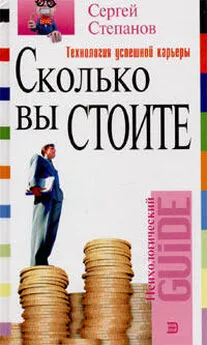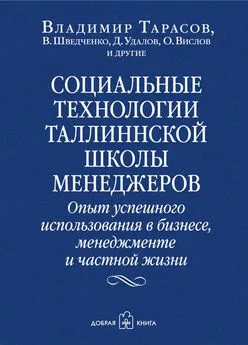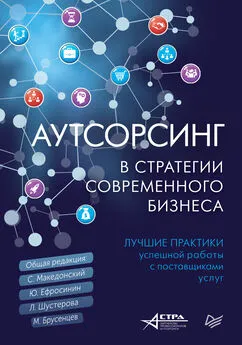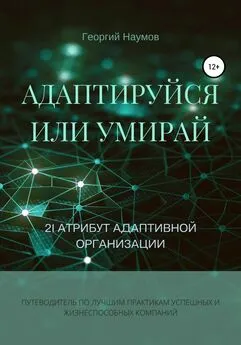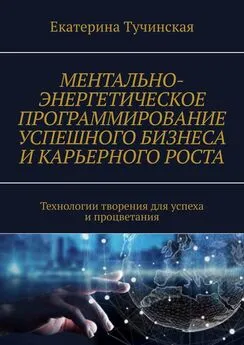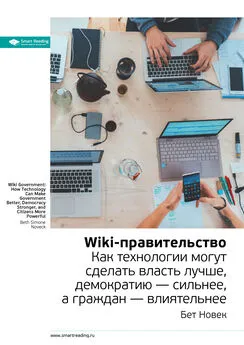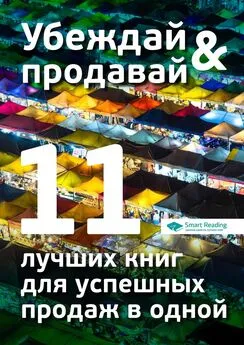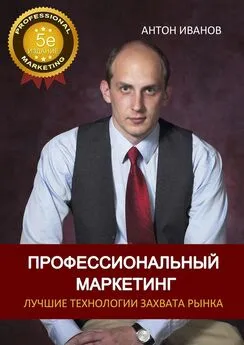Алан Кастел - С возрастом только лучше. Технологии успешного старения
- Название:С возрастом только лучше. Технологии успешного старения
- Автор:
- Жанр:
- Издательство:Лаборатория знаний
- Год:2020
- ISBN:978-5-00101-921-3
- Рейтинг:
- Избранное:Добавить в избранное
-
Отзывы:
-
Ваша оценка:
Алан Кастел - С возрастом только лучше. Технологии успешного старения краткое содержание
Поскольку, как свидетельствует Алан Д. Кастел, готовиться к старости нужно начинать загодя, книга будет интересна читателям самого разного возраста.
С возрастом только лучше. Технологии успешного старения - читать онлайн бесплатно ознакомительный отрывок
Интервал:
Закладка:
149
Dillon, N. (2009, April 20). Jeff Skiles, Sully’s heroic co-pi-lot from flight 1549, has smooth return to cockpit after furlough. Daily News, http://www.nydailynews.com/news/jeff-skiles-sully-heroic-co-pilot-flight-1549-smooth-return-cockpit-furlough-article-1.363958
150
Flight 1549: A routine takeoff turns ugly. CBS News, 60 Minutes, February 8, 2009. http://www.cbsnews.com/news/flight-1549-a-routine-takeoff-turns-ugly/
151
Salthouse, T. A. (2000). Aging and measures of processing speed. Biological Psychology, 54, 35–54.
152
Diamond, J. (2013, January 29). The daily shower can be a killer. New York Times, http://www.nytimes.com/2013/01/29/science/jared-diamonds-guide-to-reducing-lifes-risk.html
153
Bishai, D., Trevitt, J. L., Zhang, Y., McKenzie, L. B., Leventhal, T., Gielen, A. C., & Guyer, B. (2008). Risk factors for unintentional injuries in children: Are grandparents protective? Pediatrics, 122, e980-e987.
154
Kornell, N. (2011). How grandparents unlock kids learning potential. Psychology Today. https://www.psychologytoday. com/blog/everybody-is-stupid-except-you/201108/how-grand-parents-unlock-kids-learning-potential
155
Bohanek, J. G., Marin, K. A., Fivush, R., & Duke, M. P. (2006). Family narrative interaction and children’s sense of self. Family Process, 45, 39–54.
156
Crystal, B. (2013). Still foolin’ ‘em: Where I’ve been, where I’m going, and where the hell are my keys'! New York: Henry Holt and Co.
157
Verghese, J., Lipton, R. B., Katz, M. J., Hall, С. B., Derby, C. A., Kuslansky, G…. Buschke, H. (2003). Leisure activities and the risk of dementia in the elderly. New England Journal of Medicine, 348, 2508–2516.
158
Cheng, S. T., Chan, A. C., & Yu, E. C. (2006). An exploratory study of the effect of mahjong on the cognitive functioning of persons with dementia. International Journal of Geriatric Psychiatry, 21, 611–617.
159
Bengtsson, S. L., Nagy, Z., Skare, S., Foreman, L., Forssberg, H., & Ulin, F. (2005). Extensive piano practicing has regionally specific effects on white matter development. Nature Neuroscience, 8, 1148–1150.
160
Amer, T., Kalender, B., Hasher, L., Trehub, S. E., & Wong, Y. (2013). Do older professional musicians have cognitive advantages? PloS One, 8, e71630.
161
Bialystok, E., Craik, F. I., & Freedman, M. (2007). Bilingualism as a protection against the onset of symptoms of dementia. Neuropsychologia, 45, 459–464.
162
Spreng, R. N., Drzezga, A., Diehl-Schmid, J., Kurz, A., Levine, B., & Perneczky, R. (2011). Relationship between occupation attributes and brain metabolism in frontotemporal dementia. Neuropsychologia, 49, 3699–3703.
163
Shimamura, A. P., Berry, J. M., Mangels, J. A., Rusting, C. L., & Jurica, P. J. (1995). Memory and cognitive abilities in university professors: Evidence for successful aging. Psychological Science, 6, 271–277.
164
Castel, A. D. (2007). Aging and memory for numerical information: The role of specificity and expertise in associative memory. Journals of Gerontology, 62, 194–196.
165
Carlson, M. C., Parisi, J. M., Xia, J., Xue, Q. L., Rebok, G. W., Bandeen-Roche, K., & Fried, L. P. (2011). Lifestyle activities and memory: Variety may be the spice of life. Journal of the International Neuropsychological Society, 18, 286–294.
166
Horhota, M., Lineweaver, T., Ositelu, M., Summers, K., & Hertzog, C. (2012). Young and older adults’ beliefs about effective ways to mitigate age-related memory decline. Psychology and. Aging, 27, 293–304.
167
Boots, E. A., Schultz, S. A., Almeida, R. P., Oh, J. M., Kos-cik, R. L., Dowling, M. N…. Asthana, S. (2015). Occupational complexity and cognitive reserve in a middle-aged cohort at risk for Alzheimer’s disease. Archives of Clinical Neuropsychology, 7, 634–642.
168
Беседа с Майей Энджелоу, 2 февраля 2011.
169
Hultsch, D. F., Hertzog, C., Small, B. J., & Dixon, R. A. (1999). Use it or lose it: Engaged lifestyle as a buffer of cognitive decline in aging? Psychology and Aging, 14, 245–263.
170
Salthouse, T. A. (2006). Mental exercise and mental aging evaluating the validity of the „use it or lose it“ hypothesis. Perspectives on Psychological Science, 1, 68–87.
171
Hertzog, C., McGuire, C. L., Horhota, M., & Jopp, D. (2010). Does believing in „use it or lose it“ relate to self-rated memory control, strategy use, and recall? Journal of Aging and Human Development, 70, 61–87.
172
Ball, K., Berch, D. B., Helmers, K. F., Jobe, J. B., Leveck, M.D., Marsiske, M…. Unverzagt, F.W. (2002). Effects of cognitive training interventions with older adults. A randomized controlled trial. Journal of the American Medical Association, 288, 2271–2281.
173
Park, D. C., Lodi-Smith, J., Drew, L., Haber, S., Hebrank, A., Bischof, G. N., & Aamodt, W. (2014). The impact of sustained engagement on cognitive function in older adults: The Synapse Project. Psychological Science, 25, 103–112.
174
Stine-Morrow, E.A., Parisi, J.M., Morrow, D.G., & Park, D.C. (2008). The effects of an engaged lifestyle on cognitive vitality: A field experiment. Psychology and Aging, 23, 778.
175
Jackson, J. J., Hill, P. L., Payne, B. R., Roberts, B. W., & Stine-Morrow, E.A.L. (2012). Can an old dog learn (and want to experience) new tricks? Cognitive training increases openness in older adults. Psychology and Aging, 27, 286–292.
176
Sun, F.W., Stepanovic, M. R., Andreano, J., Barrett, L. F., Touroutoglou, A., & Dickerson, В. C. (2016). Youthful brains in older adults: Preserved neuroanatomy in the default mode and salience networks contributes to youthful memory in superaging. Journal of Neuroscience, 36, 9659–9668.
177
Feldmann Barrett, L. (2016, December 2). Grey matter: How to become a,superager“. New York Times, https://www.ny-times.com/2016/12/31/opinion/sunday/how-to-become-a-su-perager.html?_r=o
178
Marzorati, G. (2016). Late to the Ball. New York: Scribner.
179
Marzorati, G. (2016, April 29). Better aging through practice, practice, practice. New York Times. https://www.nytimes. com/2016/05/01/opinion/better-aging-through-practice-prac-tice-practice.html?_r=o
180
Erickson, К. L., Voss, M. W., Prakash, R. S., Basak, C., Szabo, A., Chaddock, L…. Wojcicki, T. R. (2011). Exercise training increases size of hippocampus and improves memory. Proceedings of the National Academy of Sciences of the United States of America, 108, 3017–3022.
181
Hayes, S. M., Alosco, M. L., Hayes, J. P., Cadden, M., Peterson, К. M., Allsup, K…. Verfaellie, M. (2015). Physical activity is positively associated with episodic memory in aging. Journal of the International Neuropsychological Society, 21, 780–790.
182
Tracy, K. (2005). Ellen: The real story of Ellen DeGeneres. New York: Pinnacle Books.
183
Беседа с Джоном Гленном, 13 декабря 2012.
184
0’Donovan, G., Hamer, M., & Stamatakis, E. (2017). Relationships between exercise, smoking habit and mortality in more than 100,000 adults. International Journal of Cancer, 140, 1819–1827.
185
Bialystok, E., Craik, F. I., & Freedman, M. (2007). Bilingualism as a protection against the onset of symptoms of dementia. Neuropsychologia, 45, 459–464.
186
Lawton, D. M., Gasquoine, P.G., & Weimer, A. A. (2015). Age of dementia diagnosis in community dwelling bilingual and monolingual Hispanic Americans. Cortex, 66, 141–145.
187
Alexander, W. (2015). Flirting with French. New York: Workman Publishing.
188
Pillai, J. A., Hall, С. B., Dickson, D. W., Buschke, H., Lipton, R. B., & Verghese, J. (2011). Association of crossword puzzle participation with memory decline in persons who develop dementia. Journal of the International Neuropsychological Society, 17, 1006–1013.
189
Verghese, J., Lipton, R. B., Katz, M. J., Hall, С. B., Derby, C. A., Kuslansky, G…. Buschke, H. (2003). Leisure activities and the risk of dementia in the elderly. New England Journal of Medicine, 348, 2508–2516.
190
Hambrick, D. Z., Salthouse, T. A., & Meinz, E. J. (1999). Predictors of crossword puzzle proficiency and moderators of age-cognition relations. Journal of Experimental Psychology: General, 128, 131–164.
191
Я придумал компьютерную программу, которая может сделать чтение похожим на разгадывание кроссвордов. Называется она Adaptext (и пока находится в стадии разработки). Она позволяет людям при чтении различных текстов (книг, статей) с экрана компьютера самим заполнять создаваемые программой пробелы в ключевых словах, что делает процесс чтения увлекательной и непростой головоломкой, способной улучшать запоминание этих ключевых слов.
192
Wllner, С., & Halpern, A. R. (2015). Attentional flexibility and memory capacity in conductors and pianists. Attention, Perception, and Psychophysics, 78, 198–208.
193
Habib, M., & Besson, M. (2009). What do music training and musical experience teach us about brain plasticity? Music Perception, 26, 279–285.
194
Maarella, N., Fairfield, B., & Cornoldi, C. (2007). Does music enhance cognitive performance in healthy older adults? The Vivaldi effect. Aging Clinical and Experimental Research, 19, 394–399.
195
Lindsay, J., Laurin, D., Verreault, R., Hbert, R., Helliwell,
B., Hill, G. B., & McDowell, I. (2002). Risk factors for Alzheimer’s disease: A prospective analysis from the Canadian Study of Health and Aging. American Journal of Epidemiology, 156, 445–453.
196
Langa, К. M., Larson, E. B., Crimmins, E. M., Faul, J. D., Levine, D. A., Kabeto, M. U., & Weir, D. R. (2017). A comparison of the prevalence of dementia in the United States in 2000 and 2012. JAMA Internal Medicine, 177, 51–58.
Читать дальшеИнтервал:
Закладка:
